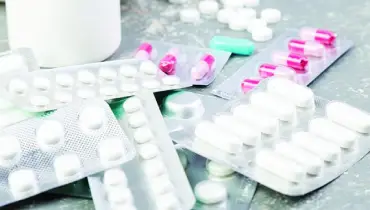
After a fire, Rainbow Restoration advises immediate disposal of certain household items to ensure safety and health. These recommendations include:
|
One of the hardest parts about recovering from a fire is deciding what you can salvage and what you must throw away. It’s heartbreaking to discard damaged items with sentimental value, and it feels like a waste of money to dump food exposed to smoke. However, the cost to restock your pantry and fridge is worth avoiding the potential health problems you could endure if you eat contaminated food! For your safety, follow our advice and throw these four things away after a fire, no questions asked.
Non-perishable food Exposed to Heat, Smoke, and firefighting Chemicals
Food safety after a fire is a huge issue. You should discard opened containers and anything stored in permeable packaging, such as cardboard, cloth, or thin plastic bags. But what about food in cans or jars?
Sealed food may appear to be okay – however, if these items were close to the heat of the fire, they may no longer be edible. High heat can activate bacteria that cause food spoilage or create an undesirable taste to develop, even if the jar or can is intact. Toxic fumes can also contaminate food through sealed glass jars and aluminum cans.
Be thorough when inspecting your kitchen for smoke, heat, water, and firefighting chemical damage. Throw out any food items, sealed or unsealed, if you even remotely suspect that they have come into contact with these contaminants. Charred food, bulging or rusted cans, and fire extinguisher dust on food are dead giveaways that you should throw them away.
Perishable Food Left at Room Temperature for Too Long
Sometimes, refrigerated and frozen food is salvageable after a fire. Even if the power went out, a well-sealed fridge could keep food at a safe temperature for about four hours. If the refrigerator wasn’t damaged in the fire, open the door and assess the situation carefully. If you come across any of these scenarios, throw out the food, no questions asked:
- It smells smoky in the fridge.
- Soot has visibly penetrated the fridge.
- The refrigerator lost power after the fire, and the food had been above 40 degrees for over two hours.
- Perishable items have an odd odor.
- Food in the freezer no longer feels cold and hard and has no ice crystals on it.
- When you attempt to prepare salvaged food, it has an off-smell or flavor.
Medicines & Cosmetics
Your medicine cabinet and makeup bag are important places to check after a fire. Inspect the products stored here for signs of heat, soot, fire extinguisher dust, or other damage. If anything is warped from exposure to high heat or charred from the flames, throw it out, no questions asked.
Burned Clothing
Clothes, bedding, and other textiles can often be salvaged after a fire with the proper cleaning and disinfecting. However, if anything is burnt, throw it away. Use even stricter judgment when considering your child’s or baby’s clothing.
Here’s a method you can try for washing smoke odor and soot from non-charred clothing:
- Mix 4 to 6 teaspoons of tri-sodium phosphate (be careful – TSP is caustic) and 1 cup of bleach for each gallon of water you’re using to wash fire-damaged clothing.
- Stir the mixture completely and add your clothing.
- Rinse the clothes with clean water and hang them outside to dry thoroughly.
The Bottom Line
Never attempt to salvage belongings that could put your health at risk. When it doubt, throw it out! If you have any other questions or concerns about what can be salvaged in a house fire, or if you need to schedule fire restoration services, please contact Rainbow Restoration® today.
